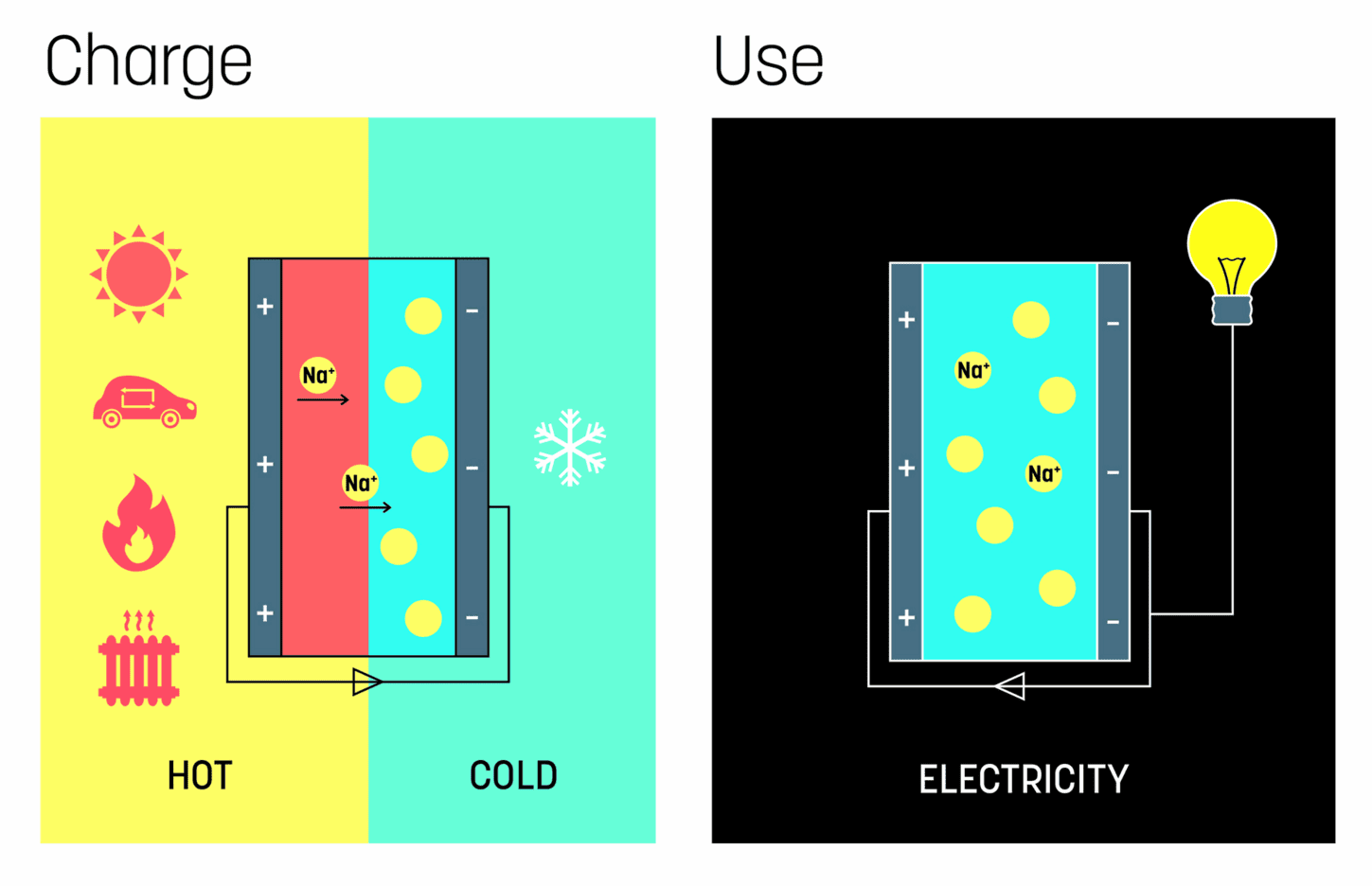
Pictured here is a flow battery operating with the new catholyte as part of the technique Dr. Yu Zhu helped develop.
The sale of electric vehicles (EV’s) has grown exponentially in the past few years as is the need for renewable energy sources to power them, such as solar and wind. There were nearly 1.8 million registered electric vehicles in the U.S. as of 2020, which is more than three times as many in 2016, according to the International Energy Agency (IEA).
Electric vehicles require power to be available anywhere and anytime without delay to recharge, but solar and wind are intermittent energy sources that are not available on demand. And the electricity they do generate needs to be stored for later use and not go to waste. That’s where Dr. Yu Zhu, a professor in UA’s School of Polymer Science and Polymer Engineering, and his research team come in, by developing a more stable way to store this important energy.
Just as the gas station today, electricity power stations need a storage system to keep the electricity for EV constantly charging. Low cost, scalable redox flow batteries (RFB) are among the most suitable technology for such a system; however, current RFBs use high-cost and environmentally hazardous active materials (electrolytes). Recently, water-soluble organic materials have been proposed as future electrolytes in the RFBs (namely aqueous organic RFBs, or AORFBs). Organic-based electrolytes can be obtained from renewable sources and manufactured with very low cost. However, the lack of stable water-soluble organic electrolyte materials, particularly the positive electrolyte (catholyte), is a major hurdle of AORFBs.
Zhu’s research group, in collaboration with scientists in Pacific Northwestern National Laboratory led by Dr. Wei Wang, successfully developed the most stable catholyte (positive electrolyte) to date in AORFBs and demonstrated cells that kept more than 90% of capacity over 6,000 cycles, projecting more than 16 years of uninterrupted service in a pace of one cycle per day. Their research was recently published in Nature Energy and included contributions from Zhu’s doctoral students Xiang Li and Yun-Yu Lai.
“Development of high-performance RFBs will enrich the category of electricity energy storage systems and complement the shortcoming of intermittent renewable energy sources, therefore largely improving the usability of electricity powered facilities, such as vehicles,” says Zhu. “To significantly improve the performance of aqueous organic RFBs, the urgency of developing new catholyte is crucial.”
In the Nature Energy paper, the team not only demonstrated a state of art catholyte in AORFBs, but also provided a brand-new strategy to design water soluble catholyte to enhance their solubility (energy density) in water. Instead of attaching a hydrophilic functional group to improve the solubility of the molecules, the researchers change the symmetry of molecules, which results in a dramatic enhancement of solubility. With the new design strategy, the team plans to design new materials they can further mature the RFBs.
Original Article: Polymer scientist helps develop new technique for large-scale energy storage
More from: University of Akron | Pacific Northwest National Laboratory
The Latest Updates from Bing News & Google News
Go deeper with Bing News on:
Large-scale energy storage
- SA unlocks investment opportunities for renewable energy
The private offtaker market is core for investment in SA’s renewable energy sector, says non-profit organisation GreenCape.
- Drone attacks allegedly damage Russian energy infrastructure
A drone attack reportedly damaged energy infrastructure in Russia's Oryol and Kursk Oblasts, local government officials reported on May 1.
- Advanced 'high-density waterless hydro' energy plant gets green light
This remarkable project promises to open up zero-carbon energy storage to a broad range of areas without huge hills, delivering 2.5 times the power of water-based hydro. A pilot plant has been ...
- Energy Storage: A New Asset Class Buyers Of Power Should Consider Investing In
Investing in energy storage doesn’t just provide a pathway for reducing carbon emissions; it’s also a pathway for potential savings on electricity and energy costs.
- New sodium-ion battery tech boosts green energy storage affordability
In an advance for energy-storage technologies, researchers have developed high ionic-conductivity solid-state electrolytes for sodium-ion batteries that dramatically enhance performance at room ...
Go deeper with Google Headlines on:
Large-scale energy storage
[google_news title=”” keyword=”Large-scale energy storage” num_posts=”5″ blurb_length=”0″ show_thumb=”left”]
Go deeper with Bing News on:
AORFBs
- Feed has no items.
Go deeper with Google Headlines on:
AORFBs
[google_news title=”” keyword=”AORFBs” num_posts=”5″ blurb_length=”0″ show_thumb=”left”]










